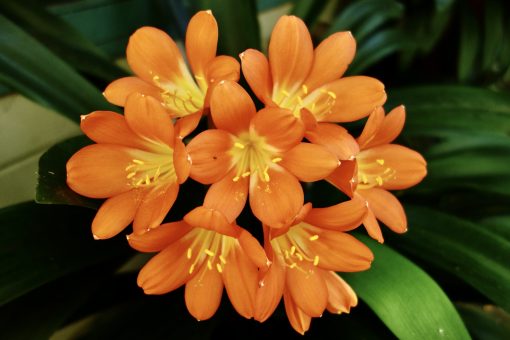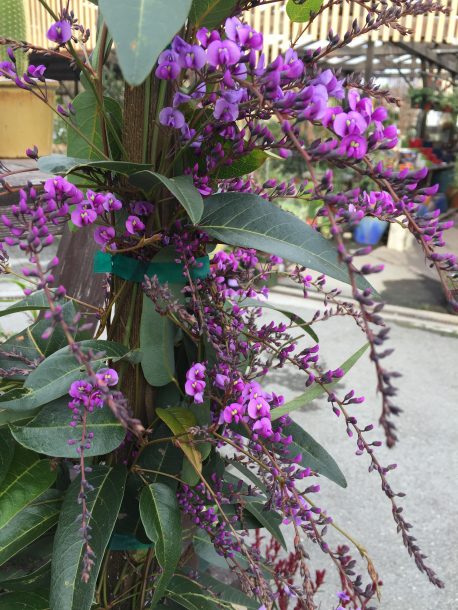
Almost overnight, although maybe I’m judging by rain storms, spring is upon us. The birds sure know it is and I’m seeing trees in bloom and new growth on the perennials. The tree frogs are croaking and looking for mates, the weeds are happily trying to grow and set seed before we notice them. But whether you want them to or not all gardens change with time. It’s part of nature that the fittest survive. Possibly you have different ideas of what you want your garden to look like but it’s hard to fool Mother Nature.
I don’t have my Blireiana flowering plum anymore but it was a tradition for me to pose next to it with my birthday presents in late February. It was one of my favorite early spring blooming trees with double pink blossoms and a sweet fragrance strong enough to scent the garden. We look forward to the earliest flowers of the new season knowing that winter will soon be over. Spring doesn’t officially begin until March 20th but hey, we live in California.
Old fashioned shrubs like flowering quince and forsythia figure prominently in many old gardens because they are tough plants able to survive neglect and still look beautiful. The bare stems of forsythia are completely covered with deep golden-yellow flowers in late winter and early spring and become the focal point of the landscape when in full bloom. The showy stems of this easy-care shrub are great for cutting. Forsythia are native to eastern Asia but a chance discovery in Germany by a grower who specialized in breeding for the cut flower industry led to the especially vivid variety ‘Kolgold’ in the 1800’s. Forsythia has long been used in Chinese medicine. The flower petals contain powerful bacteria-fighting properties which make it an important dressing.
Flowering quince is another old garden staple providing early color. They are easy to care for and nearly indestructible in almost any soil that is well drained and not overly fertile. Once established quince is a very drought tolerant plant and their spiny branches make them an excellent choice for hedges, screening or as a security barrier. There are red, pink, orange and white flowering varieties. The Toyo Nishiki cultivar even has pink, white and solid red flowers all on the same branch.

What would a shade garden be without a bright orange clivia? Every year I look forward to their huge flower clusters that emerge from between dark green, strappy leaves. Even in dark shade they will bloom and brighten the winter garden although they would do fine in morning sun. If you have a north facing window you can grow them as houseplants. Clivia are hardy to several degrees below freezing but mine, under an overhang, have survived temps of 23 degrees without damage. Clivia breeders have produced gold and peach colored flowers also but I still like the standard orange ones.

A beautiful vine that blooms in late winter is hardenbergia ‘Happy Wanderer’. In the pea family, this evergreen vine looks like a small wisteria when in bloom. Pinkish-purple flowers cascade in clusters on twining stems that reach 12-16 feet long. It requires little water once established and is hardy to about 23 degrees. If you have an older, tangled plant you can rejuvenate it with hard pruning in early spring after flowering. Never prune in late summer or fall because you will cut off the wood that is going to bloom the following winter.
The last plant I enjoy at this time of year is Fragrant Sarcococca. The tiny white flowers of this plant are easily overlooked but you can’t miss their scent. I used to have one near the front door that greeted me with that vanilla fragrance every time I walked in or out. The flowers are followed by a bright red fruit. Sweet Box forms a natural espalier against a wall and if you have a problem spot in dry deep shade where other plants won’t grow give this plant a try. They are easy to grow, deer resistant and trouble free.
Enjoy yourself in the garden at this time of year when everything is waking up.
